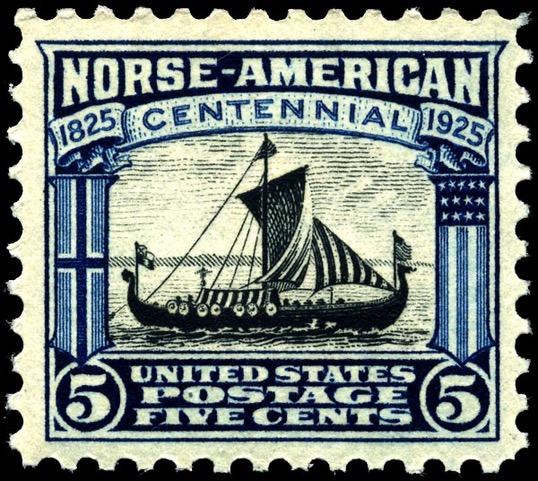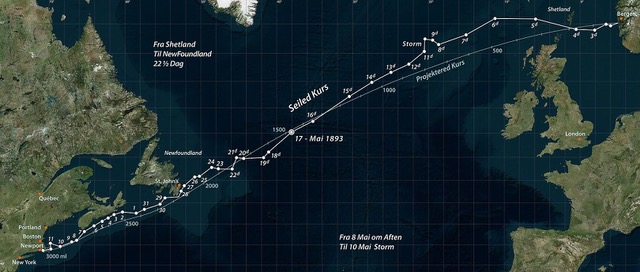No Viking ship has been copied more times than the Gokstad ship. The very first was Captain Magnus Andersen’s “Viking” from 1893. It’s a fantastic story of courage and determination.
By Einar Chr. Erlingsen

However, the replica being built by the Oseberg Viking Heritage Foundation in Sandefjord and Tønsberg today stands out from all previous replicas being the first archaeological replica, constructed after thorough studies of the original ship, including the materials that were in too poor a condition to be used when the Gokstad ship was prepared for display. This constitutes about 20% of the ship and is stored at the Viking Ship Museum.
Magnus Andersen’s Voyage
The Gokstad ship was excavated in 1880. For the first time, people of that era truly understood what a Viking ship looked like, although parts of the ship were, of course, quite damaged after nearly 1,000 years in the burial mound outside Sandefjord. Nevertheless, it was well-preserved enough to allow for the construction of a decent replica.
The person who initiated building such a replica was Captain Magnus Andersen from Larvik. The ship was launched at Framnæs Mechanical Workshop in Sandefjord early in the spring of 1893 and first sailed triumphantly along the Norwegian coast before setting course for America with Andersen and a crew of 11. They were to cross the North Atlantic towards Newfoundland and continue to New York in an almost unbelievable 28 days. This corresponds to about 5 nautical miles per hour on average.
After a wild reception in New York with tens of thousands of spectators, Captain Andersen and the “Viking” continued through the Erie Canal and the Great Lakes towards the journey’s final destination: the World’s Fair in Chicago. There, the theme—albeit a year late—was dedicated to Christopher Columbus’ “discovery” of America in 1492.

Upstaging the Italians
Until quite recently, it was believed that Columbus was born in Genoa and was therefore Italian. Only now, with genetic testing, have we discovered that he was probably a Spaniard of Jewish descent. Regardless, in 1893, it was the Italians who made the most noise when celebrating the anniversary, including by building a replica of Columbus’ flagship, “Santa Maria,” and transporting it by steamship to the States.
And then along came the “Viking”—completely upstaging the Italians. Captain Andersen and his crew had proven that the Vikings in their open ships could have sailed to America, as claimed in, among other sources, the Saga of Erik the Red. (This was later indisputably confirmed by Helge and Anne Stine Ingstad’s excavations in Newfoundland in the 1970s).
A Tumultuous Life
After the World’s Fair closed, the “Viking” sailed down the entire Mississippi to New Orleans before heading back north again. The reception was extravagant wherever they went. But funds were running low, so plans to return the ship to Norway had to be scrapped. Instead, the “Viking” ended up back in Chicago, this time in Lincoln Park, where she languished for many years due to lack of maintenance.
In the 1990s, Lincoln Park was set to be expanded with a zoo, and the “Viking” had to be moved. Eventually, she ended up in the town of Geneva, Illinois, not far from Chicago. There, the ship is well taken care of by the Friends of the Viking Ship organization and remains a popular tourist attraction.
But it all started in Sandefjord, with a discovery, a dream, and a very daring man.

Read more at:
vikingship.us
osebergvikingarv.no

